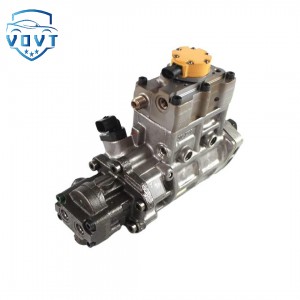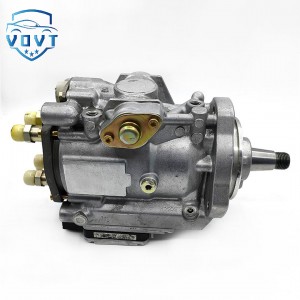New Original Pressure Regulator Suction Pressure Valve 0 281 006 074 SCV Valve for Auto Spare Parts 0281006074
Products Description
| Reference Codes | 0 281 006 074 |
| Application | / |
| MOQ | 12PCS |
| Certification | ISO9001 |
| Place of Origin | China |
| Packaging | Neutral packing |
| Quality Control | 100% tested before shipment |
| Lead time | 7~10 working days |
| Payment | T/T, L/C, Paypal, Western Union, MoneyGram or as your requirement |
How to inspect and repair the SCV valve?
Detection method
Appearance inspection: First check whether the appearance of the SCV valve is damaged, such as whether the shell has cracks or deformation, whether the connection parts are loose, leaking oil, etc. At the same time, check whether the wire plug is intact, and whether there are problems such as corrosion, looseness or bent pins.
Resistance measurement: Disconnect the electrical connection of the SCV valve and use a multimeter to measure the resistance value of the SCV valve coil. The resistance values of SCV valves of different models are different, generally ranging from a few ohms to tens of ohms. You can refer to the standard values in the vehicle maintenance manual. If the measured value is significantly different from the standard value, it means that the coil may have problems such as short circuit, open circuit or aging.
Voltage detection: When the engine is running or started, use the voltage range of the multimeter to measure the voltage at the SCV valve plug. Under normal circumstances, the changing voltage corresponding to the engine operating conditions should be detected. If the voltage is abnormal, it may be a problem of engine control unit (ECU) failure, line open circuit or short circuit.
Data flow analysis: Read the data flow of the engine control system through the car diagnostic instrument to check the working parameters of the SCV valve, such as command current, actual flow, etc. Compare these data with the standard data under normal working conditions. If the deviation is large, it means that the SCV valve may not work properly.
Functional test: You can use a professional injector test bench or common rail system test equipment to perform functional tests on the SCV valve. Simulate different working conditions on the test equipment to observe whether the opening and closing actions of the SCV valve are normal and whether the fuel flow can be accurately controlled.
Maintenance method
Cleaning and resetting: If the SCV valve is only abnormal due to surface dirt or slight jamming, it can be disassembled and the inside and outside of the valve can be cleaned with a special cleaning agent to remove impurities such as carbon deposits and oil stains. After cleaning, reinstall it in the correct way and ensure that the installation position is accurate and the connection is firm.
Replace seals: If the SCV valve is found to have oil leakage, it is usually caused by aging or damage of the seal. At this time, new seals, such as O-rings, seals, etc., need to be replaced. When replacing seals, pay attention to selecting seals of appropriate specifications and materials, and ensure that the seals are not damaged during installation.
Coil repair or replacement: If the resistance measurement finds that the coil is faulty, for some simple coil break or short circuit problems, you can try to repair it, such as re-welding the breakpoints, repairing the insulation layer, etc. However, if the coil is severely damaged, it is generally recommended to directly replace the new SCV valve coil or the entire SCV valve assembly.
Calibration and matching: After repairing or replacing the SCV valve, it needs to be calibrated and matched using professional diagnostic equipment. This is because the working characteristics of the SCV valve may be different from the original valve, and its parameters need to be readjusted to match the engine control system to ensure the normal operation of the engine.























